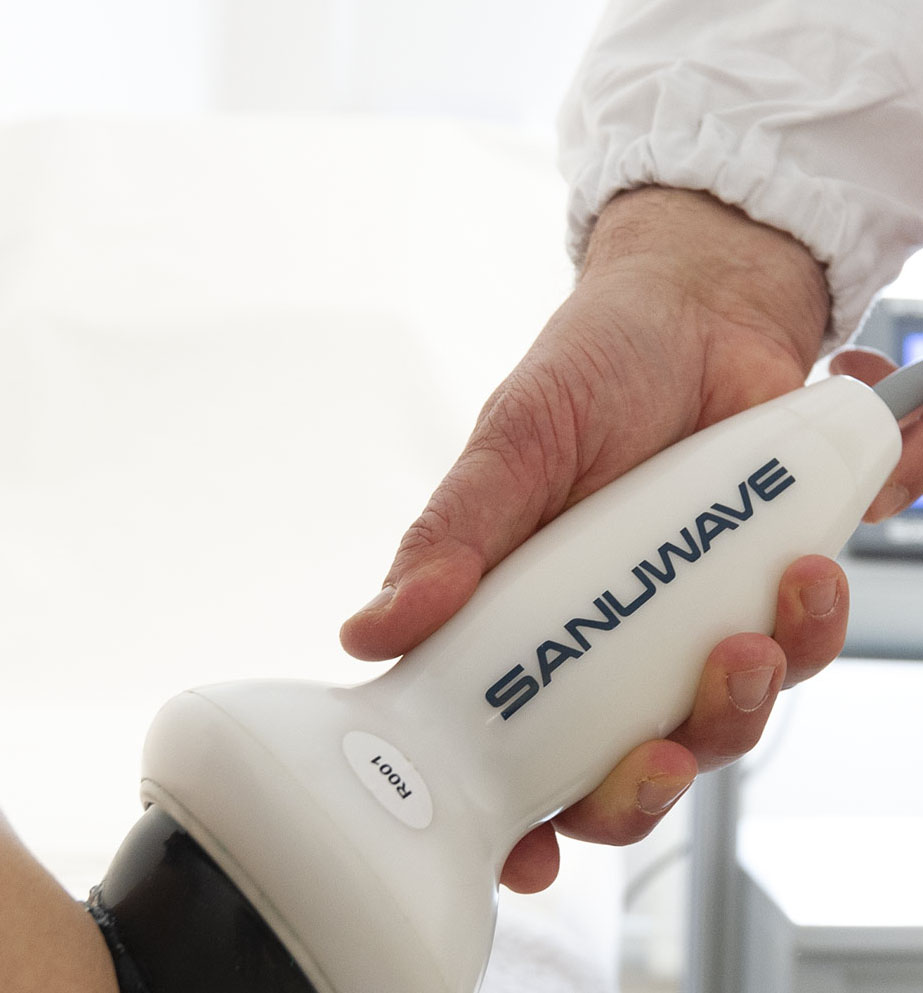Extracorporeal Shock Wave Therapy (ESWT) is a highly effective non-invasive treatment: the wave is generated by an electrode that emits an electric discharge in a chamber containing liquid and is transmitted through a membrane (therapy head) that is placed in contact with the skin. This allow the shock waves to be transmitted deep into the skin, producing an analgesic and anti-inflammatory effect on soft tissues. Through extracorporeal shock wave therapy, it is possible to treat diseases in the areas of orthopaedics, dermatology and aesthetic medicine on an outpatient basis.
THE TREATMENT WITH SHOCK WAVES

What's the ESWT?
Extracorporeal Shock Wave Therapy (ESWT) is a highly effective non-invasive treatment: the wave is generated by an electrode that emits an electric discharge in a chamber containing liquid and is transmitted through a membrane (therapy head) that is placed in contact with the skin. This allow the shock waves to be transmitted deep into the skin, producing an analgesic and anti-inflammatory effect on soft tissues. Through extracorporeal shock wave therapy, it is possible to treat diseases in the areas of orthopaedics, dermatology and aesthetic medicine on an outpatient basis.
Therapeutic
indications
- Tendinitis
- Epicondylitis
- Retrocalcaneal spur
- Achillodynia, calcific insertional tendinopathy of the Achilles tendon
- Subcalcaneal spur
- Induratio penis plastica
- Epitrochanteric bursitis
- Consolidation delay and pseudoarthrosis in fracture after-effects
- Ulcers, decubitus ulcers, diabetic foot

The Treatment
With the patient sitting or lying on a stretcher, the therapy head membrane, previously spread with ultrasound gel, is applied onto the anatomical part to be treated.
The treatment lasts a few minutes, and in most cases is completely painless.
The number of treatments is determined by the doctor according to the severity of the disease and the specific response of each subject.
In general, the more complex pathologies are resolved with 2-3 therapy sessions performed at intervals of approximately 1-2 weeks, with a success rate of over 90% of cases. The treatment is not recommended in pacemaker-implanted patients, subjects on anticoagulants and pregnant women, for whom shock wave therapy is contraindicated.
